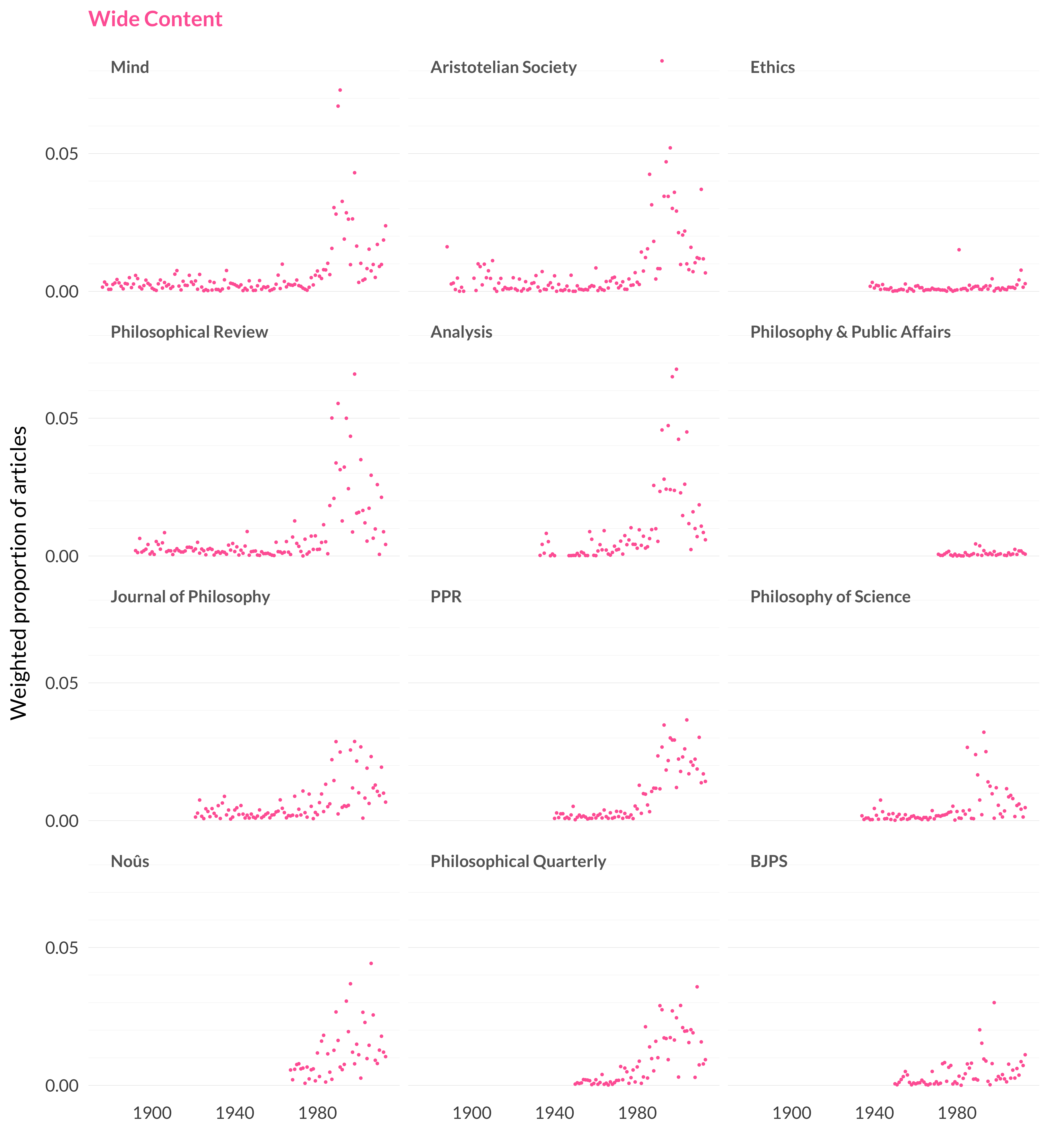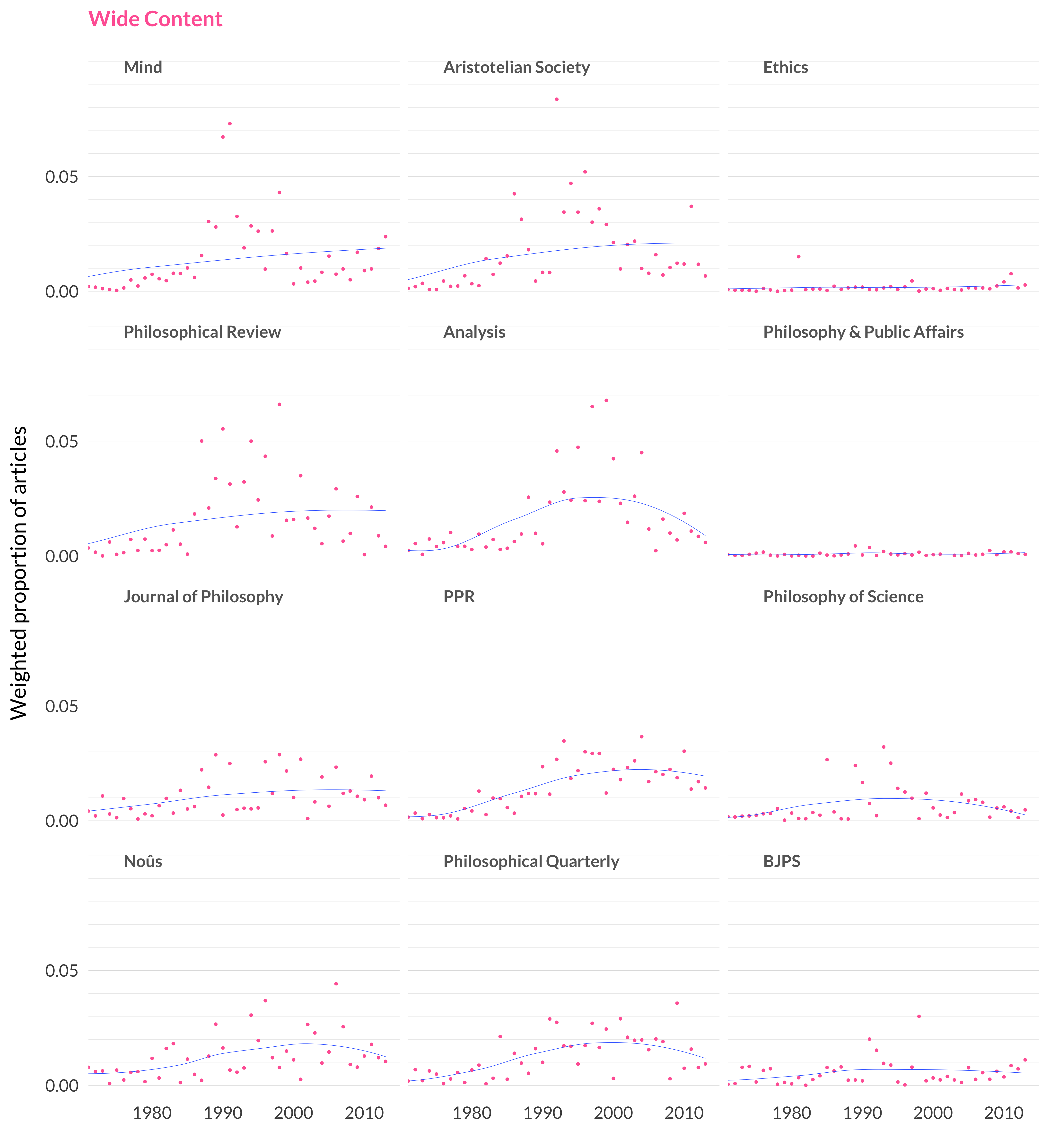2.85 Wide Content
Category: Philosophy of Mind
Keywords: twin, burge, contents, content, externalism, representational, thoughts, representation, externalist, individualism, fodor, narrow, representations, representing, represents
Number of Articles: 222
Percentage of Total: 0.7%
Rank: 69th
Weighted Number of Articles: 228.2
Percentage of Total: 0.7%
Rank: 73rd
Mean Publication Year: 1995.4
Weighted Mean Publication Year: 1987.9
Median Publication Year: 1996
Modal Publication Year: 1992
Topic with Most Overlap: Ordinary Language (0.0405)
Topic this Overlaps Most With: Concepts (0.0486)
Topic with Least Overlap: Crime and Punishment (5e-05)
Topic this Overlaps Least With: Crime and Punishment (7e-04)

Figure 2.195: Wide content.

Figure 2.196: Wide content articles in each journal.
Comments
Contemporary debates about semantic externalism were kicked off by Saul Kripke’s “Naming and Necessity” and Hilary Putnam’s “Meaning and Reference”. Naming and Necessity isn’t in this study, though its impacts are felt in several places. But “Meaning and Reference” is, and it is even in this category. Here are the model’s views on where to place “Meaning and Reference”.
| Subject | Probability |
|---|---|
| Wide content | 0.3907 |
| Definitions | 0.1760 |
| Modality | 0.0670 |
| Ordinary language | 0.0513 |
| Meaning and use | 0.0430 |
| Universals and particulars | 0.0401 |
| Analytic/synthetic | 0.0389 |
| Sets and grue | 0.0278 |
| Radical translation | 0.0271 |
| Marx | 0.0248 |
| Concepts | 0.0246 |
| Speech acts | 0.0222 |
Its largest topic is this one, but the model also notes it is about definitions and modality, which makes sense. But the probability that it is in this topic is comfortably largest. And it’s an incredibly influential paper, so I would have guessed that it would have been quickly followed by a flood of similar papers.
But that’s not remotely what happened. The model sees very little work on this topic for another decade. There is a bit of discussion in the mid-1980s, then it is Michael McKinsey’s 1991 paper “Anti-Individualism and Privileged Access”, that really starts the discussion going. Just to make this vivid, let’s focus on the last forty years of those graphs above, starting from Putnam’s original paper.

Figure 2.197: Recent work on wide content.
The lack of life in this topic through the 1970s and much of the 1980s was one of the biggest surprises to me of the whole project. In recent years it feels like topics can catch fire immediately after the publication of a high-profile paper. But that is really not what happened in debates about wide content. Putnam’s paper is one of the most influential of its time, and its time is the most important few years in the history of philosophy, but that influence was not felt for many years after its publication.